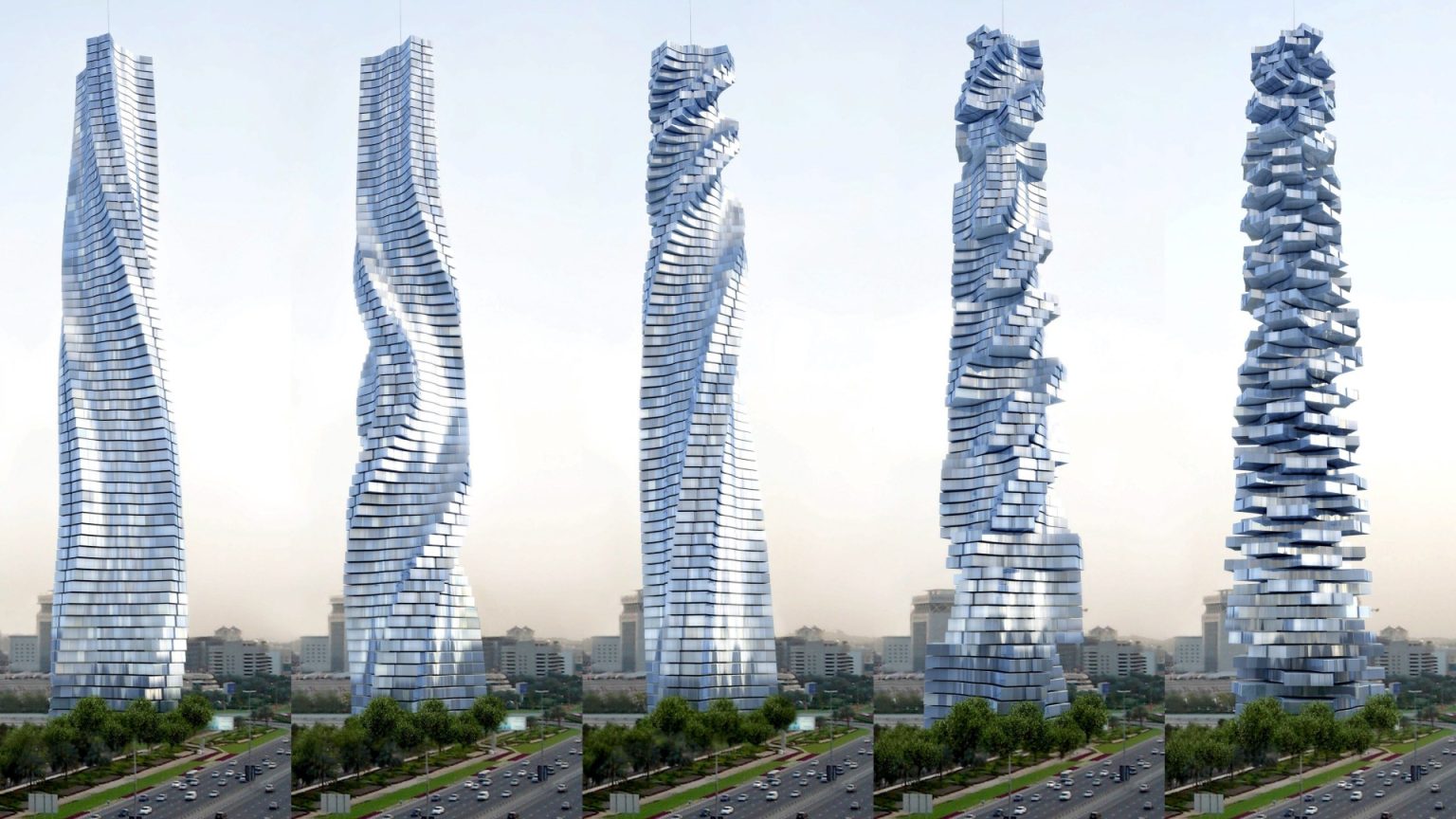David Fisher’s Dynamic Tower, a proposed rotating skyscraper, presented a radical reimagining of architectural design. Standing at a projected height of 1,273 feet, the 80-story structure was designed to rotate 360 degrees in both directions, a feat never before attempted in architectural history. Each floor was intended to rotate independently, powered by wind turbines placed between each level and supplemented by solar panels on the roof. This innovative approach would create a constantly shifting silhouette, with the building’s form dynamically changing according to the whims of its residents. Fisher’s inspiration for this unconventional design stemmed from a moment of observation atop the Olympic Tower in New York City, where the desire to capture multiple views simultaneously sparked the idea of a rotating floor. Initially proposed in 2008, the project garnered attention primarily from Dubai, a city known for its ambitious architectural endeavors. The Dynamic Tower would have added yet another impressive structure to Dubai’s already iconic skyline, further solidifying its reputation for pushing the boundaries of design and engineering.
Beyond its rotational capabilities, the Dynamic Tower boasted several other unique features intended to enhance the living experience of its occupants. Voice-activated control of floor rotation promised residents personalized views at their command. A specialized internal lift system was designed to transport residents’ vehicles directly to their apartments, eliminating the need for traditional parking garages and streamlining access. Adding to its opulent vision, the building was to include a six-star hotel, the Dynamic Hotel, where guests could even influence the building’s dynamic shape and the skyline, further blurring the lines between architecture and interactive experience. With apartment prices estimated to range between £3.2 million and £32.1 million, and a total construction cost projected at $1.2 billion, the Dynamic Tower was envisioned as a luxury residence and hotel appealing to a discerning clientele.
Fisher’s innovative vision extended to the construction process itself. He proposed pre-assembling each floor in a factory setting before transporting them to the construction site for attachment to the central core. This modular construction method, if successful, would have streamlined the building process and potentially reduced construction time. This approach aligned with Fisher’s philosophy that architecture should be adaptable and responsive to the evolving needs and desires of its inhabitants. His goal was to create a building that was not static but rather a dynamic entity in constant motion, reflecting the ever-changing lives and preferences of those within.
Despite its ambitious design and futuristic features, the Dynamic Tower project faced significant hurdles. Initially slated to open in Dubai in 2020, coinciding with the World Expo in the United Arab Emirates, the project was ultimately canceled. The primary cause for its cancellation was attributed to the financial crisis, which impacted funding and investment in large-scale projects globally. Furthermore, doubts surrounding the structural feasibility of the rotating design and the complex engineering required to realize it likely contributed to the project’s demise. To date, no official announcement regarding the resumption or alternative plans for the Dynamic Tower has been made. Its ambitious vision remains a testament to a bold architectural concept, though its realization remains uncertain.
The Dynamic Tower’s cancellation stands in contrast to other ambitious architectural projects around the world, some facing similar challenges and others moving forward despite complexities. For instance, plans for Europe’s tallest skyscraper, the Bestseller Tower in Denmark, were also put on hold due to the pandemic, highlighting the impact of external factors on large-scale construction projects. In contrast, projects like the proposed Big Bend skyscraper in Manhattan, envisioned as the world’s longest building with its unique U-shaped design, continue to generate discussion and explore the potential of pushing architectural boundaries. Similarly, London has approved the construction of a 74-story skyscraper exceeding 1,000 feet in height, demonstrating that while some projects falter, the drive for architectural innovation and ambition persists.
The story of the Dynamic Tower serves as a cautionary tale, illustrating the challenges of translating ambitious architectural visions into reality. While the project may not have come to fruition, it ignited a conversation about the future of architecture and the potential for dynamic, adaptable buildings that respond to the ever-changing needs of their inhabitants. The concept of rotating structures, while complex, continues to fascinate and inspire architects and engineers to explore innovative solutions that could one day reshape our skylines. Whether such ambitious projects ultimately succeed or remain unrealized, they contribute to a broader dialogue about the possibilities of architecture and the potential for creating structures that are not merely static but dynamic and responsive to the world around them.











